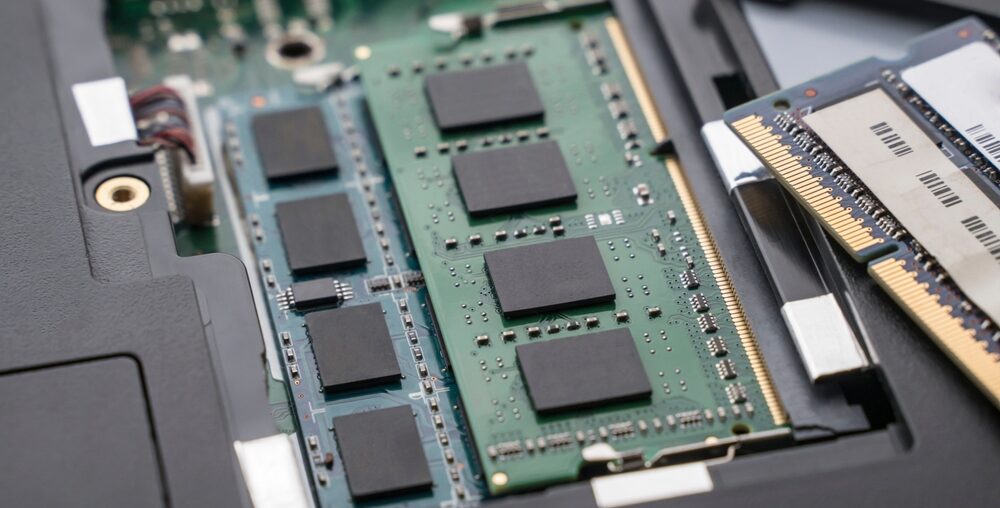RAID controller memory is a critical component of modern IT hardware and computer hardware systems. It serves as a buffer to store and manage data as it moves between storage devices and the system. This memory ensures that data is written accurately and efficiently, significantly improving the performance and reliability of storage systems.
For businesses relying on servers for daily operations, RAID controller memory plays a vital role in ensuring data redundancy, storage efficiency, and enhanced system performance. This guide explains what RAID controller memory is, how it works, and why it’s essential for your IT infrastructure.
2. What is a RAID Controller?
A RAID (Redundant Array of Independent Disks) controller is a hardware or software solution that manages multiple hard drives or SSDs to work as a single system. The RAID controller’s primary goal is to enhance data redundancy, increase performance, and ensure system reliability.
RAID controllers come in two forms:
- Hardware RAID Controllers: These are physical devices with dedicated processors and memory, offering superior performance.
- Software RAID Controllers: These rely on system resources like CPU and RAM, making them less efficient than hardware RAID controllers.
The RAID controller communicates with storage devices and manages data storage operations, such as striping, mirroring, and parity calculations.
3. Types of RAID Controller Memory
RAID controller memory is often referred to as cache memory. It plays a vital role in optimizing the system’s performance. Here are the primary types of RAID controller memory:
- Volatile Memory (DRAM):
- Data is stored temporarily and cleared when the system is powered off.
- It’s fast but requires battery backup to prevent data loss during power failures.
- Non-Volatile Memory (NVRAM/Flash Memory):
- Data is retained even when the system loses power.
- It ensures high data integrity and is more reliable than DRAM.
- Write-Back Cache:
- Data is written to the cache before it is written to the disk, enhancing speed.
- It improves system performance but requires a battery backup to prevent data loss.
- Write-Through Cache:
- Data is written directly to the disk and cached simultaneously.
- This method prioritizes data integrity but can be slower than write-back cache.
4. Key Functions of RAID Controller Memory
RAID controller memory plays a crucial role in the smooth operation of IT hardware. Its primary functions include:
- Data Caching: Stores frequently used data to reduce access times and speed up system operations.
- Error Correction: Identifies and corrects errors to ensure data integrity.
- Write Optimization: Improves write performance by temporarily storing write requests before processing.
- Data Mirroring: Ensures copies of data are stored in multiple locations for redundancy.
- Parity Calculation: Used in RAID 5, RAID 6, and other similar configurations to ensure data recovery in case of disk failure.
5. Importance of RAID Controller Memory in IT Hardware
The performance of IT hardware and computer hardware is directly influenced by the RAID controller’s memory. Here’s why RAID controller memory is essential:
- Improves Data Redundancy: Ensures copies of data are stored across multiple disks, minimizing the risk of data loss.
- Boosts System Performance: Caching frequently used data reduces access times, leading to faster system operations.
- Enhances Data Integrity: Error correction capabilities ensure that data remains accurate and uncorrupted.
- Supports Enterprise Applications: Large-scale IT environments require fast and efficient data access, and RAID controller memory provides this support.
6. How RAID Controller Memory Enhances Computer Hardware
RAID controller memory enhances computer hardware in several ways, making it a crucial component of enterprise IT systems:
- Faster Data Access: Cache memory ensures that frequently accessed data is available instantly.
- Increased Reliability: RAID controller memory supports redundancy, reducing the risk of system downtime.
- Better Storage Management: It optimizes the performance of storage arrays by handling complex data processes.
- Reduced Workload on CPUs: Hardware RAID controllers offload data management from CPUs, allowing them to focus on other tasks.
7. Factors to Consider When Choosing RAID Controller Memory
Selecting the right RAID controller memory for your IT hardware depends on several factors, such as:
- Capacity: Larger cache sizes result in better performance.
- Type of Memory: Choose between volatile (DRAM) and non-volatile (NVRAM) options.
- Battery Backup: Essential for volatile memory to prevent data loss during power outages.
- System Compatibility: Ensure the RAID controller is compatible with your existing IT hardware.
- Application Needs: High-demand environments, like databases, require larger memory capacities.
8. Differences Between Cache and RAID Controller Memory
Although “cache memory” and “RAID controller memory” are sometimes used interchangeably, they have distinct roles:
| Feature | Cache Memory | RAID Controller Memory |
|---|---|---|
| Location | CPU or system memory | Within the RAID controller |
| Function | Speeds up program execution | Manages storage operations |
| Type | Volatile | Volatile or non-volatile |
| Data Storage | Temporary for program data | Temporary for storage data |
9. How Much Memory Does a RAID Controller Need?
The amount of RAID controller memory you need depends on your workload. Here are some guidelines:
- Small Businesses: 256MB to 512MB is sufficient for general usage.
- Data Centers: 1GB to 4GB provides better performance for high-demand workloads.
- Enterprise-Grade Systems: 8GB or more is required for large-scale storage solutions.
10. Benefits of Upgrading RAID Controller Memory
Upgrading your RAID controller memory can yield significant benefits for IT hardware, such as:
- Faster System Performance: Larger cache sizes speed up data access and write processes.
- Increased Data Integrity: Enhanced error correction capabilities improve data accuracy.
- Improved Redundancy: More cache memory enables efficient RAID configurations like RAID 5, RAID 6, and RAID 10.
11. Common Issues with RAID Controller Memory and How to Fix Them
Despite its reliability, RAID controller memory can encounter issues. Here are some common problems and their solutions:
- Battery Backup Failure: Replace the battery unit to prevent data loss.
- Cache Overload: Increase the cache size or optimize disk usage.
- Memory Corruption: Update firmware or run diagnostics to detect errors.
12. Future Trends in RAID Controller Memory for IT Hardware
The future of RAID controller memory is shaped by emerging technologies, such as:
- Use of NVMe (Non-Volatile Memory Express): NVMe technology offers faster access and improved efficiency.
- AI and Machine Learning Integration: AI-driven systems will optimize cache usage and predict data access patterns.
- Energy-Efficient Memory: Advances in low-power memory will reduce energy consumption in data centers.
13. Final Thoughts on RAID Controller Memory
RAID controller memory is a crucial aspect of IT hardware that supports data redundancy, speeds up system performance, and ensures data integrity. Upgrading RAID controller memory can significantly enhance the efficiency and reliability of your storage systems.
Whether you’re managing a small business or a large data center, investing in the right RAID controller memory will lead to better system performance and improved business continuity. When choosing RAID controller memory, consider your workload, budget, and long-term storage needs to get the best results.




